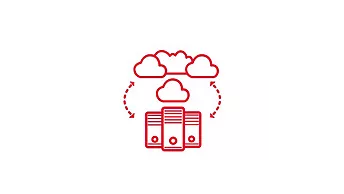CloudLens
Cloud Visibility Platform
Any Packet | Any Network | Any Cloud

Line of Site to Your Business
As organizations look for new ways to grow and thrive in their business in the cloud, determining how the network evolves to meet the demands of this new operating model is a critical step in the strategy. Whether you are building your own private data center or venturing to the public cloud and all that it has to offer, your existing security controls should evolve with you. You may feel that extending your security coverage into private or public clouds is not an option but that is simply not true. Some cloud providers offer basic level security, but your organization deserves better than ‘good enough’. At Keysight, we feel that ‘good enough is not enough’. You have invested in your current security strategy for a reason, you should be able to take that with you on your digital transformation journey.
You can’t let cloud visibility limitations stifle the growth of your business. Keysight helps organizations around the world realize their dreams. CloudLens is just another example of how we do that.
Public Cloud, Private Cloud, Hybrid Cloud, Any Cloud
Monitor Traffic Across Your Hybrid Cloud with CloudLens
Both public and private clouds have their merits. That's why many organizations utilize both. These hybrid cloud implementations maximize versatility, however many solutions cannot capture packets in both public and private clouds without complex and costly workarounds.
Hybrid clouds demand a seamless, stress-free visibility solution. With CloudLens, you can access crucial packet data without headaches. Compatible with most major public, and private clouds, its easy-to-use management platform simplifies packet capture and saves valuable time.
You Can't Secure What You Can't See
Most organizations use cloud in some way, shape, or form. However, while the cloud offers unparalleled flexibility, agility, and scale, it is not without its challenges. Monitoring east-west traffic is notoriously difficult — creating critical blind spots. As network perimeters vanish and attackers grow more sophisticated, a lack of cloud visibility not only impacts your ability to monitor network security, compliance, and performance, it can leave you exposed to data breaches and other costly security vulnerabilities.
When visibility matters most, organizations worldwide trust CloudLens to help them monitor and protect their public, private, and hybrid clouds. With platform-agnostic architecture, containers/Kubernetes compatibility, and turnkey integration with leading security, application performance management (APM), and network performance management (NPM) tools, you can count on CloudLens to secure your most critical vulnerabilities by delivering wide-ranging, actionable intelligence to the right tools at the right time.
What You Get

Reduced Risk, Improved Efficiency
Boost security by eliminating blind spots and enhance your monitoring tools by filtering and load-balancing packet data at the source.

Multi-platform Capability
Platform-agnostic architecture makes it easy to see into almost any public, private, or hybrid cloud environment.

Low Impact, Turnkey Startup
Day-one compatibility with leading security, APM, and NPM tools helps you avoid costly infrastructure investments and lengthy delays.
Awards and Accomplishments





Cloud Visibility Ecosystem
Security and performance monitoring are as essential to your organization as they are to today's modern enterprise. Your network is critical. The last thing you need is a clunky visibility solution that relies on complex workarounds or jeopardizes the effectiveness of your security and monitoring tools by dropping packets or not closing blind spots.
That's why Keysight works with leading security, APM, and NPM tool providers (including open source providers) to enable day-one compatibility with CloudLens. With the joint solution, you can maximize your monitoring effectiveness while minimizing its impact on your day-to-day operations.
